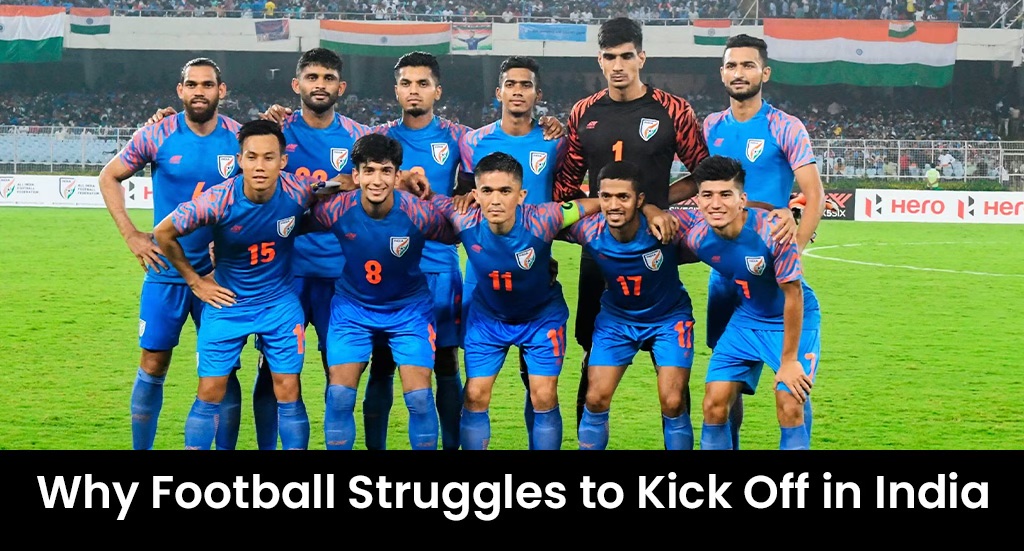Football, a game revered and passionately followed by millions around the world, is considered a cultural phenomenon similar to religion in many areas. Nonetheless, the average football fan in India finds its appeal perplexing. India is under-represented in the world’s most popular sport. There is a frenzy among Indian football fans for international matches, but this does not resonate for Indian games. India has never qualified for a FIFA World Cup. While football has a strong following in West Bengal, Goa, Kerala, and the Northeast, it is struggling to garner national traction, particularly when compared to cricket. The burning question remains: why hasn’t football caught fire in India?
This investigation has sparked several conversations, arguments, and critiques. Sports writers, armed with research, have attempted to solve the maze of what went “wrong” during India’s football trip. How is it that football has won the hearts of the world while India remains mainly unmoved?
A big contributing element is a lack of high-level coaching and development programmes. Without a solid basis at the grassroots level, identifying and fostering emerging talent becomes a daunting task. Quality coaching and planned development programmes are critical for promoting football growth in any country and India lacks enough of these.
In contrast to countries like Brazil, Argentina, and Germany, where football is strongly ingrained in the cultural ethos, India lacks a strong football culture. Cricket and other sports frequently eclipse football, making it harder to generate widespread support and interest in the game.
Historically, Indian football has received less investment than sports such as cricket. This lack of financial backing has an impact on many elements of the sport, including facilities, training programmes, and player compensation. Increased funding is required to improve the overall quality and competitiveness of Indian football.
The difficulties of Indian football are supported by its low FIFA ranking, which limits the country’s ability to attract international matches and top-tier opponents. Furthermore, it impacts worldwide perceptions of Indian football, making it difficult to garner international recognition and support.
India, ranked 102nd in the FIFA rankings and not even among Asia’s top ten sides, is experiencing a football awakening but yet struggling to shake off its slumber.
Though Indian football has made progress over the last decade, as seen by their FIFA rating rising from 154th in 2013 to 102nd now, the sport does not ignite a frenzy in India like cricket. Despite excellent initiatives like the Indian Super League (ISL), Supercup, I-league, and the All-India Football Federation’s (AIFF) Vision 2047, ongoing obstacles continue to stymie progress.
Despite being regarded as India’s best football competition, the ISL struggles to attract spectators compared to the IPL. The All India Football Federation (AIFF) must launch extensive awareness and engagement initiatives to attract the interest of football fans. Raising the profile of Indian football will not only increase its fan base but also attract more investment and sponsorship.
In a conversation with Al Jazeera, Stephen Constantine, former head coach of the Indian men’s football team says: “India is not a giant in football because they haven’t done anything on the international front for years,”
While Indian football faces challenges, it also has potential. Addressing these difficulties is critical and the goal is simple: Increase football to the same degree of popularity as cricket. This would enhance India’s sporting storyline.
Football in India can develop with hard work and dedication, becoming a vital part of India’s unique sports culture. If progress continues at its current rate, the football venue may soon challenge cricket grounds in the hearts of Indian fans!








